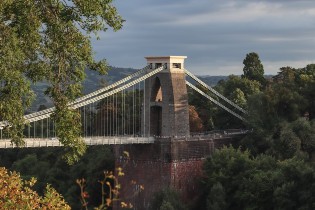Know Your Place: Exploring Bristol’s Historical Landmarks

Nestled within the spectacular rolling hills of South West England, Bristol is a thoroughly modern city with its own unique identity and spirit. The area also has a long and rich history to explore, with many notable historical landmarks to visit that will help you to understand precisely why the locals are so passionate about this very special city.
Bristol Cathedral
Located in the West End of the city on College Green, Bristol Cathedral has been an impressive landmark for more than one thousand years. Visitors have the opportunity to climb the Cathedral Tower’s 172 steps on a special guided tour, during which you will also learn how this special building has evolved over time and get up close and personal with some of the world’s most impressive Medieval bells.
Cabot Tower
Located in the stunning Brandon Hill parkland, Cabot Tower stands at more than 100 feet tall and was constructed in 1897 as a way to honour the voyage of John Cabot to North America from Bristol, some four centuries earlier. Visitors can climb the tower’s winding steps in order to soak in the views across the city’s oldest park and beyond to the Harbourside area of Bristol.
Clifton Observatory
Located above the Avon Gorge, Clifton Observatory was constructed in 1766 as a working windmill before William West took over the building and installed the iconic camera obscura. Today, the Observatory offers stunning panoramic views that allow visitors to soak in everything from Clifton Downs to the striking Clifton Suspension Bridge.
Clifton Suspension Bridge
This world famous bridge is a feat of engineering designed by Isambard Kingdom Brunel. Unfortunately, Brunel didn’t live to see the completion of the bridge in 1864, however it stands as a memorial to his ingenuity and today sees up to 12,000 vehicles safely across the Avon Gorge and the River Avon every single day.
SS Great Britain
Also designed by Isambard Kingdom Brunel, the SS Great Britain was rescued and faithfully restored to its Victorian splendour in the 1970s. Today, this spectacular ship is consistently named as Bristol’s number-one attraction and allows visitors to step back in time to experience what it would have felt like to travel aboard the world’s first major ocean liner.
St Mary Redcliffe Church
This beautiful medieval church is a fine example of Gothic architecture and has stood on the site for more than 800 years. Inside, visitors can marvel at breathtaking stained glass, strikingly detailed ironwork from the 18th century, and an organ that is famous around the world. Positioned above the harbour, it became a tradition for merchants to begin and end every voyage at the Our Lady of Redcliffe shrine.
Bristol Old Vic Theatre
Bristol’s Old Vic is the English-speaking world’s oldest continuously operated theatre and was constructed in 1766. Today, following an extensive redevelopment project that has created greater accessibility, the mission of the theatre is to create pioneering entertainment for all and it now boasts a Studio Theatre as well as its heritage offering.
Bristol City Docks
The Harbourside area of Bristol was once a bustling dock which saw countless merchants trading goods and sailors embarking on epic voyages around the world. Today, the area is overflowing with restaurants, bars and markets, as well as being a place to take part in an array of activities including rowing, cycling and paddle boarding.
Ashton Court Estate
Located just 10 minutes from Bristol’s bustling centre, Ashton Court Estate spans some 850 acres of grasslands and woodland and is home to majestic oak trees and grazing deer. Designed by Humphrey Repton and once occupied by the Smyth family, both the mansion and grounds have a lot to offer including pitch-and-putt golf courses, a miniature railway, mountain biking and walking routes, hot air ballooning, and more.
Blaise Castle Museum and Estate
This estate was also designed by Humphrey Repton and is popular amongst locals who want to escape the hustle and bustle of the heart of the city to enjoy some quieter moments nearby. There are some 400 acres of beautiful parkland to explore in the Blaise Castle estate, offering something for everyone regardless of whether you want to walk, run, or enjoy a leisurely picnic on a warm day. The Gothic Revival folly was constructed in 1766 and some say it features in Jane Austen’s classic novel Northanger Abbey.
Wills Memorial Building
The Wills Memorial Building was designed by Sir George Oatley as a memorial to Henry Overton Wills III, who was a member of a local wealthy tobacco manufacturing family and philanthropist best known for funding the University of Bristol in 1909. Standing at over 100 feet, this neo-gothic structure is among the tallest buildings in Bristol and many view it as the centrepiece of the Bristol University precinct. Great George, one of the largest bells in England, is housed at the top of the building and strikes every hour.
